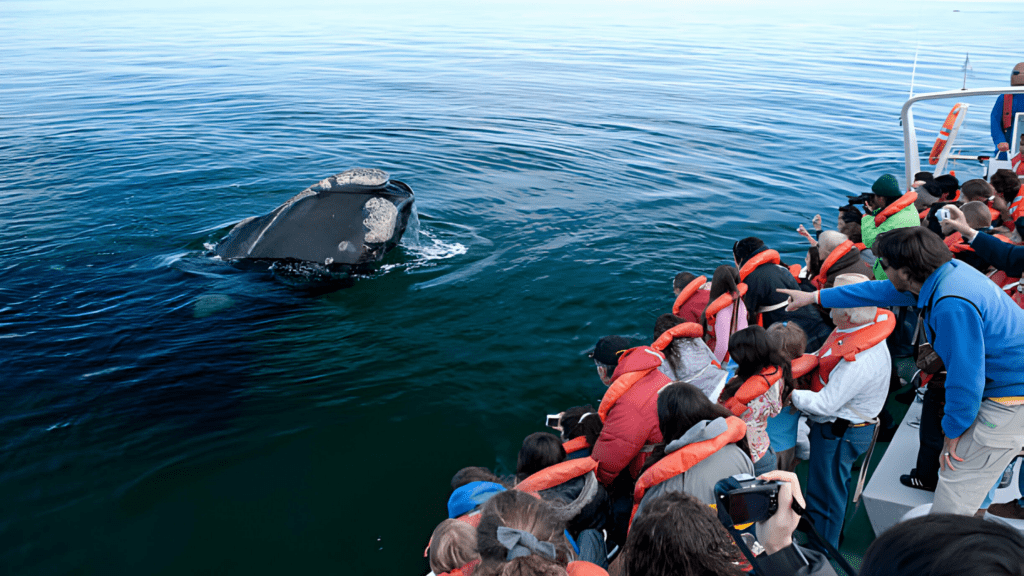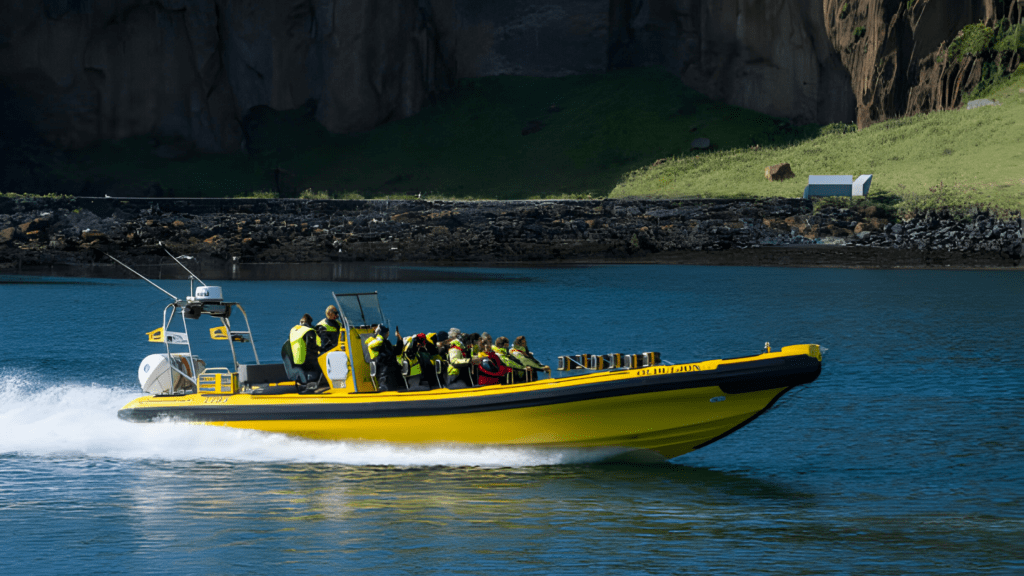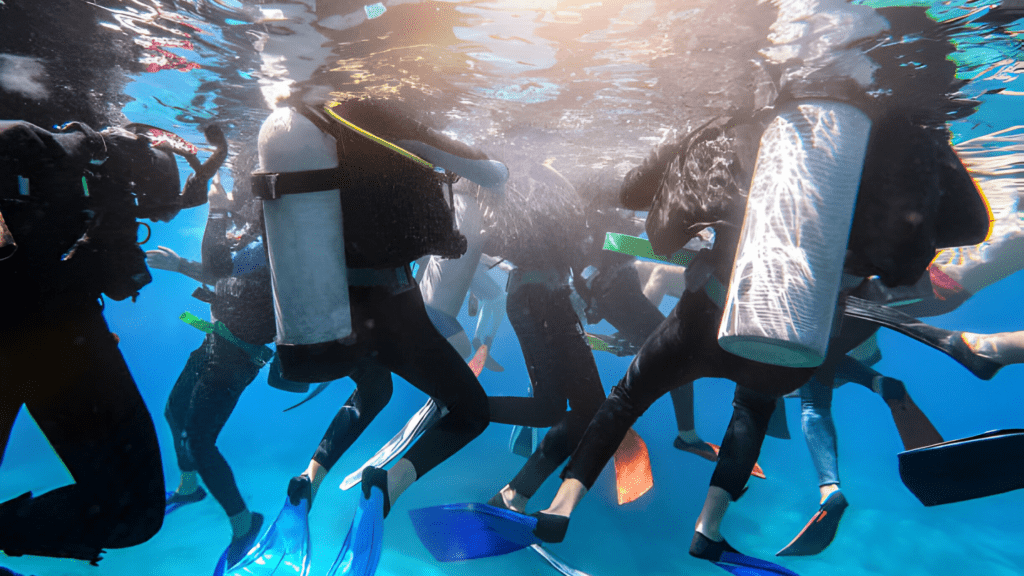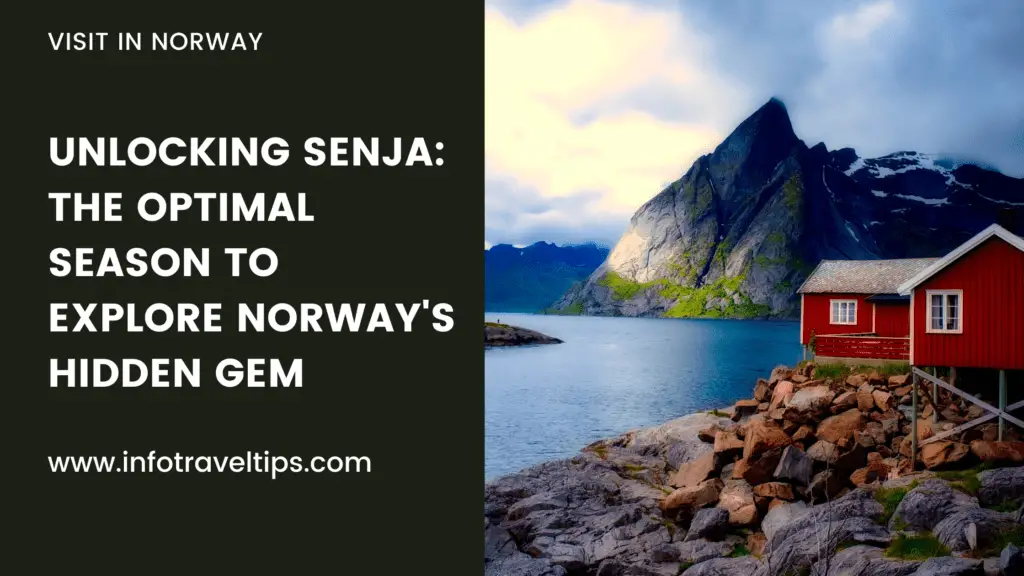The Norwegian Fjords, known for their breathtaking landscapes, also offer a unique opportunity for families to engage in wildlife experiences. These natural wonders provide a safe and educational environment for children to learn about various ecosystems and the importance of preserving nature.
wildlife in Norway’s fjords
1. Whale Watching Tours
One of the most spectacular experiences in the fjords is whale watching. These tours, usually conducted on larger boats equipped with safety measures for families, offer a chance to witness the majestic beauty of whales such as orcas and humpbacks. Expert guides provide commentary on whale behavior, their migratory patterns, and conservation efforts. The tours are not only thrilling as you watch these giants breach the water’s surface, but they’re also deeply educational, offering insights into marine life and the importance of ocean conservation.

2. Bird Watching Excursions
The fjords’ cliffs and coastal areas are a haven for birdwatchers. Families can join guided tours where binoculars and spotting scopes are provided to observe species like puffins, sea eagles, and guillemots. Guides often share fascinating facts about each species’ life cycle, habitat, and role in the fjord ecosystem. This activity is particularly engaging for children, fostering an early interest in ornithology and environmental science.

3. Fjord Safari by RIB Boat
For a more adventurous experience, families can embark on a RIB (Rigid Inflatable Boat) safari. These high-speed boats offer an exhilarating ride along the fjords, providing close-up views of wildlife like seals basking on rocks or playful otters. The safari often includes stops at remote locations, where families can learn about the local flora and fauna. The guides, knowledgeable about the geological formations of the fjords, provide interesting stories and facts that keep children engaged.

4. Guided Nature Walks
Many fjord areas offer guided nature walks suitable for families. These walks are tailored to be informative and entertaining for children, with guides pointing out different plant species, explaining the fjord’s geology, and perhaps even showing tracks or signs of land animals like deer or foxes. These walks often include interactive elements like identifying bird calls or searching for specific plants, making them both fun and educational.

5. Interactive Marine Centers
Several fjords are home to marine centers where families can learn about marine life in an interactive setting. These centers often feature touch pools, aquariums, and interactive exhibits that explain the fjord’s marine ecosystem. Children can learn about everything from plankton to large marine mammals, gaining a comprehensive understanding of the fjord’s biodiversity.

6. Fishing Trips
Fishing trips can be a fun way for families to connect with nature. These trips, often led by local fishermen, teach the basics of fishing while discussing the types of fish found in the fjords, their life cycles, and the importance of sustainable fishing practices.
Nighttime in the Fjords
The Norwegian fjords, renowned for their daytime beauty, also offer a captivating nocturnal experience. As night falls, a different side of the fjord’s wildlife comes to life. This guide delves into the nocturnal animals of the Norwegian fjords and provides tips for those keen to explore these majestic landscapes under the starry sky.
The Nocturnal Wildlife
- Moose and Deer: As dusk settles, moose and deer often emerge from the dense forests to graze. Spotting these majestic creatures requires patience and a bit of luck, but the sight of them under the moonlight is a rewarding experience.
- Foxes and Badgers: These elusive mammals are more active at night, scavenging for food. While they are harder to spot, their distinctive rustling and movements can often be heard if you listen carefully.
- Owls and Nightjars: The fjords’ skies come alive with the sounds of nocturnal birds. Owls, with their haunting calls, dominate the night soundscape. Nightjars, too, add to the chorus with their distinctive churring.
- Marine Life: Fjord waters are rich in marine life. At night, you might witness bioluminescent plankton, a magical sight where the waters light up with a soft glow, and occasionally, nocturnal fish and sea mammals like seals can be seen.
Tips for Nighttime Wildlife Watching
- Safety First: Always prioritize safety. Make sure you are familiar with the terrain and have the necessary equipment like flashlights, appropriate clothing, and safety gear.
- Minimize Light and Noise: To increase your chances of spotting wildlife, use red lights which are less disruptive and keep noise to a minimum.
- Use Binoculars or Night Vision Gear: Binoculars can help you spot animals from a distance, and night vision gear can be particularly useful for observing wildlife in the dark.
- Patience is Key: Wildlife watching requires patience. Find a comfortable and safe spot to sit quietly and wait for the animals to appear.
- Hire a Local Guide: Consider hiring a local guide who knows the area and can take you to the best spots for wildlife watching while ensuring your safety.
- Respect the Wildlife: Maintain a safe distance from any animals you encounter. It’s important to respect their space and not disturb their natural behavior.
- Photography Tips: If you’re interested in nighttime photography, use a high ISO setting and a tripod to stabilize your camera for long exposures.
Exploring the Underwater World of the Norwegian Fjords
Norway’s fjords, famous for their dramatic cliffs and serene waters, also harbor a mesmerizing underwater world. This exploration dives into the rich marine life of the fjords, highlighting popular spots for snorkeling and diving, and offering a glimpse into an often unseen aspect of these majestic natural wonders.
The Marine Ecosystem of the Fjords
The fjords’ cold, clear waters are teeming with a diverse range of marine species. From colorful corals and sea anemones to a variety of fish species, the underwater landscape is as varied and dramatic as the fjords themselves. Divers and snorkelers can expect to encounter:
- Kelp Forests: These underwater forests are bustling with life. They provide a habitat for numerous fish species, starfish, and sea urchins.
- Soft Coral Gardens: Soft corals found in the fjords add a splash of color to the underwater scenery, attracting a variety of small marine creatures.
- Marine Mammals: With some luck, divers might spot marine mammals like seals and porpoises, which are common in the fjord waters.
| Experience | Location | Price (NOK) | Details |
|---|---|---|---|
| Orca Diving Expedition | Tromsø | 47,500 – 84,000 per person | This includes a 3-day or 6-day orca expedition with USEA lectures. Diving equipment is available for an additional cost ranging from 1,500 to 2,500 NOK per person. |
| Diving Equipment Rental | Various | 700 – 2,000 USD | A set of scuba diving equipment can range in this price. |
| Scuba Diving Certification | Various | 400 – 1,200 USD | Costs for obtaining a scuba diving certification. |
Popular Diving and Snorkeling Spots
- Saltstraumen: Known for its strong tidal currents, Saltstraumen offers an adrenaline-filled diving experience, rich in marine life.
- Lysefjord: Famous for the Preikestolen cliff, its underwater counterpart is equally impressive, offering clear waters and diverse marine life.
- Nærøyfjord: A UNESCO World Heritage site, it offers a more serene snorkeling and diving experience with stunning underwater vistas.
Tips for Underwater Exploration
- Safety First: Be aware of the fjords’ unique conditions, including cold water temperatures and varying currents. Always dive or snorkel with a buddy.
- Choose the Right Gear: Due to the cold water, a dry suit is recommended for diving. Ensure your gear is suitable for the conditions.
- Respect Marine Life: While exploring, be mindful of the fragile underwater ecosystem. Look, but don’t touch, and be careful not to disturb the natural habitat.
- Hire a Local Guide: Especially if you are new to the area, consider hiring a local guide who knows the best spots and the safest routes.
Enhancing Your Experience
- Underwater Photography: The fjords offer excellent opportunities for underwater photography. Bring a waterproof camera to capture the unique marine landscapes.
- Night Dives: For a different perspective, try a night dive to see how the fjord’s underwater world transforms after dark.
Conclusion
The Norwegian Fjords offer a multitude of family-friendly wildlife experiences that are both entertaining and educational. These activities not only provide enjoyment but also instill a deep appreciation for nature and the importance of preserving our natural world. Whether it’s through observing majestic whales, learning about local bird species, or exploring the fjord’s aquatic life, families can create lasting memories while gaining valuable knowledge about the environment.

